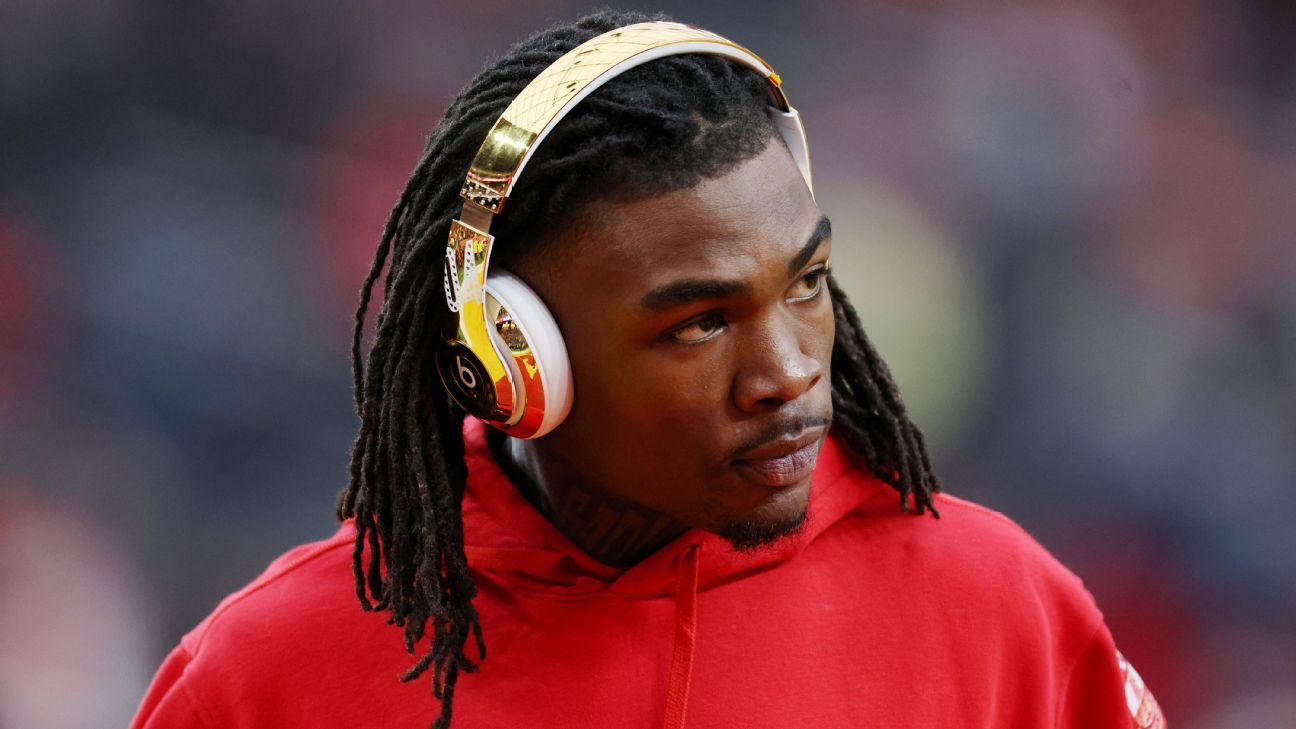KANSAS CITY, Mo. — According to Kansas City Chiefs coach Andy Reid, Rashee Rice underwent surgery on his injured right knee to address a posterolateral corner issue.
Reid mentioned that Rice’s recovery timeline will be akin to that of a typical ACL reconstruction, which is generally between ten to twelve months.
“It takes time for that to heal,” Reid noted. “He’ll start his rehabilitation and keep progressing as we move forward.”
The injury occurred in Week 4 during a game against the Los Angeles Chargers when quarterback Patrick Mahomes inadvertently collided with Rice’s knee while they were both pursuing a fumble that came after an interception.
Before the injury, Rice was leading the NFL in receptions with 24 and ranked second in yards with 288 in Week 4.
Chiefs’ Rashee Rice Undergoes Knee Surgery, Faces Lengthy Recovery Ahead
Overview of Rashee Rice’s Injury
Rashee Rice, the promising wide receiver for the Kansas City Chiefs, recently underwent knee surgery following a significant injury that has raised concerns among fans and analysts alike. The surgery was deemed necessary after Rice experienced pain and limited mobility during the season, which ultimately affected his performance on the field. As a key player for the Chiefs, his recovery will be closely monitored as the team navigates the remainder of the season.
Details of the Surgery
The surgery was performed by renowned orthopedic surgeon Dr. Mark Adickes, who specializes in sports-related injuries. According to the medical team, the procedure involved:
- Repairing damaged ligaments in the knee.
- Addressing meniscus tears that were contributing to Rice’s discomfort.
- Cleaning out any loose cartilage to improve joint function.
Recovery from such a procedure typically involves a rehabilitation period that can span several months, making it crucial for Rice to adhere to a stringent recovery plan.
Expected Recovery Timeline
While every athlete’s recovery can vary, the general timeline for a knee surgery of this nature can be projected as follows:
| Phase | Time Frame | Goals |
|---|---|---|
| Initial Recovery | 1-2 weeks | Reduce swelling, manage pain |
| Physical Therapy Phase | 2-6 weeks | Restore range of motion, begin strengthening exercises |
| Advanced Rehabilitation | 6-12 weeks | Increase strength, begin sport-specific drills |
| Return to Play | 3-6 months | Full participation in practices and games |
Impact on the Chiefs’ Offense
Rice’s absence is expected to have significant implications for the Chiefs’ offensive strategy. As a rookie, he was emerging as a reliable target for quarterback Patrick Mahomes. His unique skill set, characterized by speed and agility, allowed him to stretch the field and create mismatches against opposing defenses.
During his time on the field, Rice recorded impressive statistics, which included:
- Receptions: 45
- Receiving Yards: 650
- Touchdowns: 5
With Rice sidelined, the Chiefs must adjust their game plan. Potential replacements and adjustments may include:
- Increased roles for other wide receivers such as JuJu Smith-Schuster and Marquez Valdes-Scantling.
- Utilization of tight ends like Travis Kelce to fill the gap in passing offense.
- More reliance on the running game, with players like Isiah Pacheco stepping up.
Benefits of a Strong Rehabilitation Program
A well-structured rehabilitation program is crucial for athletes to return to peak performance after a knee injury. Here are some advantages of following a solid rehab protocol:
- Reduced Risk of Re-injury: Proper rehabilitation helps strengthen supporting muscles and stabilizes the joint.
- Improved Range of Motion: Regular physical therapy sessions can enhance flexibility and movement.
- Faster Return to Sport: Adhering to a personalized recovery plan can expedite the return to competitive play.
Practical Tips for Athletes Recovering from Knee Surgery
If you’re an athlete going through a similar recovery process, consider these practical tips:
- **Follow Medical Advice:** Always abide by your physician’s recommendations regarding activity levels and rehabilitation.
- **Stay Positive:** Mental health is crucial during recovery, so engage in activities that uplift your spirits.
- **Focus on Nutrition:** A balanced diet rich in protein and vitamins can aid healing and support muscle recovery.
- **Engage in Cross-Training:** If permitted, engaging in low-impact workouts can maintain fitness levels without straining the knee.
Case Studies of Successful Recoveries
Several high-profile athletes have made remarkable recoveries from knee surgeries, showcasing that a successful return to sport is achievable:
- Adrian Peterson (NFL): After reconstructive knee surgery, Peterson returned to rush for over 2,000 yards in the 2012 season.
- Derrick Rose (NBA): Despite facing multiple surgeries, Rose returned to form and continues to contribute in the league.
- Sidney Crosby (NHL): Crosby overcame knee issues to reclaim his status as one of the top players in hockey.
First-Hand Experience: Advice from Athletes
Many professional athletes openly share their experiences with knee injuries and recovery. Here are a few encouraging insights gathered from various interviews:
“Staying committed to my physical therapy was the hardest but most rewarding part of my recovery.” – Former NFL Player
“It’s important to listen to your body and not rush the healing process.” – Professional Soccer Player
“Surrounding myself with a supportive team and family helped me immensely during my toughest days.” – NBA Star
Conclusion: Looking Ahead
The Kansas City Chiefs and their fans will undoubtedly keep a watchful eye on Rashee Rice’s recovery journey. As he embarks on this challenging path, the support from both the organization and his fellow teammates will play an essential role in his rehabilitation process. The Chiefs’ ability to adapt offensively during his absence will be crucial, but the hope remains strong that Rice will return stronger than ever.


